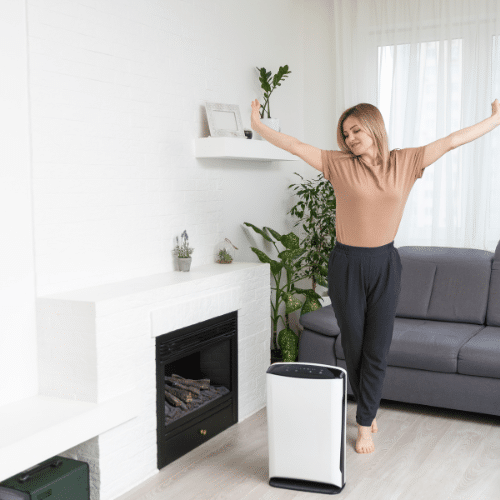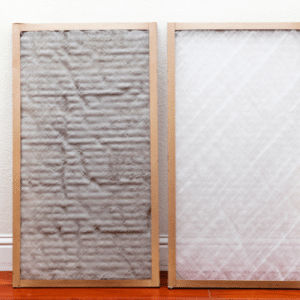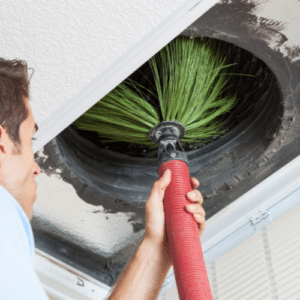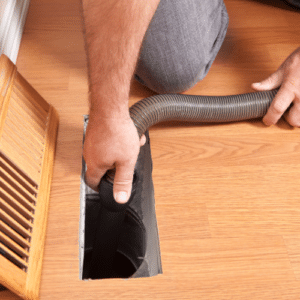
07 Nov Clear Air Prevents Pest Problems
Ventilation Keeps Pests Out
Proper air ventilation is a powerful tool in keeping pests out of your home. Many homeowners overlook how humidity and poor air circulation attract pests, but proper ventilation reduces these risks by controlling moisture, temperature, and overall air quality. In humid climates like South Florida, maintaining ventilation is even more critical as it can prevent common pest problems. Certain pests are especially drawn to areas with poor ventilation, which can create the ideal breeding ground for unwanted visitors. By understanding how air ventilation deters pests, you can take essential steps to keep your home pest-free.
Pest Busterzz knows how South Florida’s climate encourages pest activity. Through our eco-friendly pest control solutions and knowledge of environmental factors, we help homeowners implement effective pest prevention methods. This guide explores how air ventilation reduces pest risks, which areas need proper airflow, and how to maintain good ventilation as part of a pest prevention strategy.
Reduce Moisture to Deter Pests
In humid climates, poor ventilation leads to moisture buildup, which draws pests like cockroaches, termites, and mold-loving insects. These pests thrive in damp spaces and can cause damage to both your home and health. When moisture levels rise in poorly ventilated areas, pests find the perfect conditions to breed, multiply, and hide. Proper ventilation reduces these inviting conditions, making your home less attractive to them.
To control moisture levels, focus on rooms and spaces with poor ventilation, like basements, crawl spaces, and bathrooms. Running fans, opening windows, and using exhaust fans can significantly lower indoor humidity and reduce the chance of pests settling in. Regularly inspecting and cleaning ventilation systems keeps air circulating and prevents moisture buildup that pests love.
Mold and mildew attract pests such as silverfish, mites, and mold-loving insects that thrive in damp, dark areas. Poor ventilation allows moisture to settle on surfaces, encouraging mold growth and creating a pest-friendly environment. Mold not only attracts pests but also spreads allergens that affect indoor air quality, making it unpleasant for occupants.
Ventilation helps reduce mold growth by keeping air flowing and drying out surfaces prone to dampness. Installing exhaust fans in bathrooms, kitchens, and laundry rooms will help remove steam and moisture. Opening windows when cooking or showering and using dehumidifiers in humid areas are simple steps that maintain a healthier, pest-free environment.
Breathe Easy Keep Pests Out
Attics and crawl spaces are especially prone to poor ventilation, creating hot, humid conditions that attract pests like rodents, cockroaches, and spiders. Without proper ventilation, these areas trap heat and moisture, encouraging pests to nest and hide. Adding vents to these spaces allows for better airflow, reducing moisture and keeping pests from settling in. Regular inspections for moisture buildup or pest activity are essential for keeping these areas pest-free.
Basements and storage rooms also suffer from poor ventilation, particularly in humid climates like South Florida’s. Without adequate airflow, these areas retain moisture, drawing pests such as rodents, ants, and silverfish. The dampness can even lead to mildew growth, which lowers air quality and invites more pests. Installing ventilation systems or using portable dehumidifiers helps control humidity, discouraging pests from making a home in these spaces.
Kitchens and bathrooms naturally accumulate high humidity due to daily activities like cooking and showering. When ventilation is insufficient, moisture builds up, creating an ideal environment for pests like cockroaches and ants, which seek warm, damp areas. Installing exhaust fans in kitchens and bathrooms significantly reduces humidity, keeping these areas dry and less appealing to pests. Regular cleaning around plumbing fixtures and hidden corners also helps deter pests from settling.
To maintain a pest-free home, ensure that ventilation systems in attics, basements, kitchens, and bathrooms are functioning well. These areas are highly susceptible to moisture buildup, which attracts pests, but adequate airflow keeps them dry and less inviting. A combination of ventilation, regular inspections, and cleaning minimizes pest activity, contributing to a healthier and more comfortable indoor environment.
Humidity Control to Deter Pests
Exhaust fans play an essential role in managing humidity in areas like kitchens, bathrooms, and laundry rooms. Running these fans during activities that produce moisture reduces humidity, making spaces less inviting to pests. Outdoor vent covers further protect by preventing pests from entering through ventilation openings. Regular maintenance and checking for dust buildup keep exhaust fans functioning effectively and ensure consistent airflow, which helps reduce humidity-related pest issues.
In high-humidity areas, especially in South Florida, dehumidifiers are vital. Placing dehumidifiers in rooms with limited ventilation, such as basements, attics, and storage spaces, lowers moisture levels and makes these spaces less attractive to pests. Air circulators also support fresh air movement in larger spaces, keeping air from becoming stagnant and reducing the risk of pest attraction.
Combining dehumidifiers with ventilation systems improves air quality and minimizes conditions that attract pests, such as cockroaches and mold-loving insects. Proper humidity control is essential for maintaining a pest-resistant environment. Routine maintenance of dehumidifiers ensures they continue to circulate air efficiently, providing long-term prevention against pest infestations.
A well-maintained HVAC system further supports pest prevention by regulating air temperature and humidity indoors. However, HVAC systems can inadvertently attract pests if not regularly serviced, as dust, moisture, and small ductwork openings provide shelter. Regular HVAC maintenance, such as filter changes and duct inspections, along with sealing gaps, discourages pests and promotes a balanced, pest-free indoor environment.
Protect Airflow Block Pest Entry
Routine inspections are essential to keeping vents clear and effective. Blocked vents limit airflow, trapping moisture and heat that encourage pest activity. Regularly checking vents for obstructions, such as dust or debris, ensures proper circulation throughout your home, reducing the risk of pests.
Blocked vents can quickly create an environment that pests find attractive. Remove any debris around vent openings, and make sure that airflow isn’t restricted by furniture or stored items. Clear, unobstructed vents ensure consistent ventilation, making your home less hospitable to pests.
Sealing and screening vents adds another layer of protection against pests. Screens over vent openings keep pests from entering while still allowing airflow, ensuring that ventilation isn’t compromised. Properly sealed vents also prevent pests from finding gaps to squeeze through, keeping your home’s ventilation system secure.
Installing mesh screens on vents and inspecting for gaps in sealing helps keep pests out. Sealed and screened vents deter rodents, insects, and other pests from entering while ensuring proper air movement. This added protection reduces the likelihood of infestations around ventilation systems.
Conclusion
Good ventilation plays a vital role in maintaining a pest-free home by controlling moisture, air quality, and temperature. With well-ventilated spaces, homeowners can reduce the conditions that attract pests, keeping their living environment healthier and more comfortable. Taking steps to ventilate areas like basements, attics, and bathrooms prevents common pest problems associated with poor airflow and humidity.
Professional pest control, combined with proper ventilation, offers comprehensive protection for South Florida homes and businesses. By working with a knowledgeable pest control provider, you can maintain a clean, pest-resistant environment throughout the year. With the right ventilation practices and preventative pest control, you’ll enjoy a safer, pest-free home that remains comfortable for you and your family.






No Comments